What are cognitive skills and how to improve them
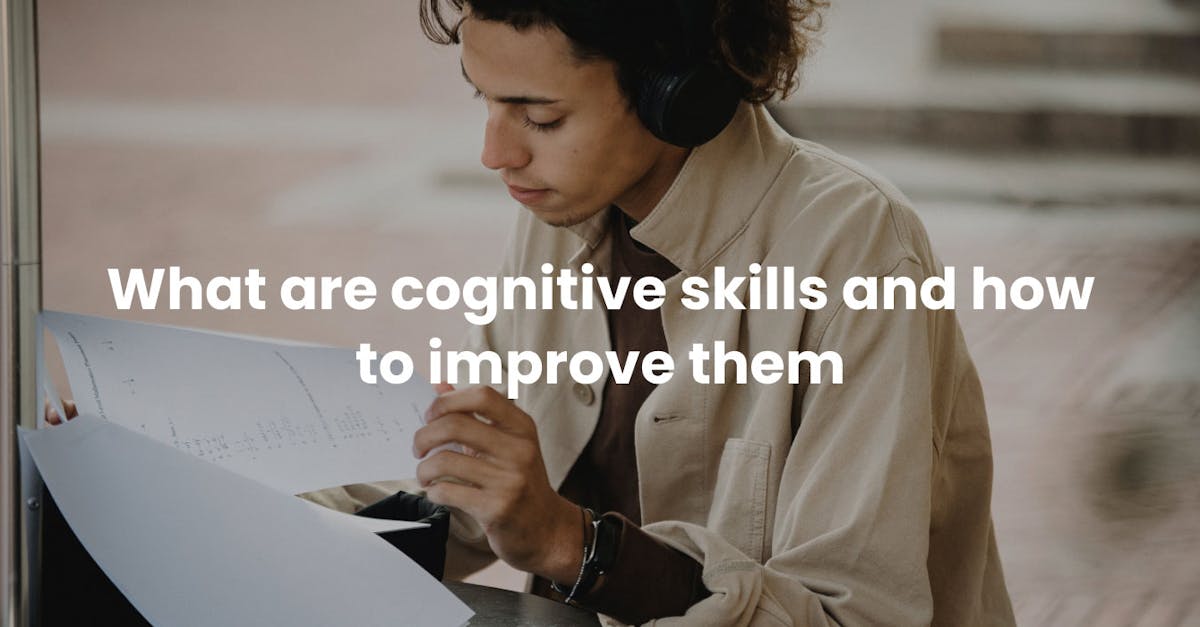
Did you know that brains are moldable and adaptable like plastic? Research is constantly showing new information to show how people’s brains change during their lives. The exciting news is that anyone can improve their cognitive skills. Let’s find out what are cognitive skills and how we can develop them in our trainees.
What are cognitive skills?
‘Cognition’ means ‘knowing’. To ‘know’ something implies that your brain is involved. So, the answer to “What are cognitive skills?” is “They are your mental capabilities (or the abilities of your brain).”
Cognitive skills examples
A long time ago (mid-1950s), Benjamin Bloom organized a cognitive ability definition. His idea has been slightly tweaked over time to keep up with changing needs and information. It is still strongly in use today.
Bloom organized cognitive skills into six categories: remember, understand, apply, analyze, evaluate, and create. As the skill categories move upward, they become more difficult and more cognitively complex. Let’s use ‘Communication Skills’ as a training topic and follow it to illustrate some cognitive skills examples.
Example Topic: Communication Skills
For example, you have a communications skills training course with several modules. Module One starts by introducing the basics: What are the characteristics of skilled communicators? You can present the following six points to your trainees:
- Listening actively
- Noticing non-verbal communication
- Speaking clearly and directly
- Being relaxed yet self-confident
- Operating from empathy
- Being open to receiving feedback as well as giving it
- Trying to be a ‘people person’
Using an LMS such as EdApp, one way to present the above content is with an expandable list template. This template breaks up long points into bite-sized bits, so your learners understand big concepts without getting overwhelmed. Each bit would be one of the above characteristics with some more explanation about what it means and/or how it works.
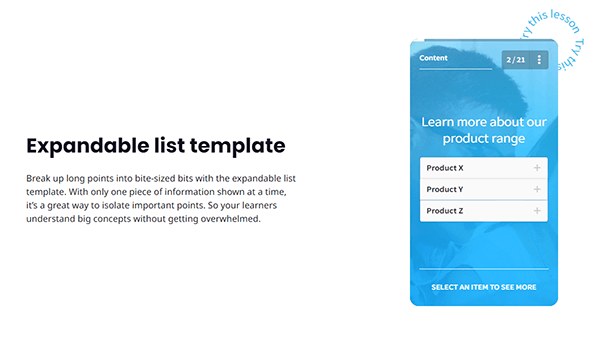
After sufficient presentation, the remainder of Module One offers your trainees learning tasks sequenced according to the order of Bloom’s Taxonomy.
Level 1 (easiest): REMEMBERING
You can use a variety of multiple-choice templates to help your trainees internalize the information you gave them. For example, use a sentence construction template to have your trainees reorder words to recall and recreate the six key points presented.
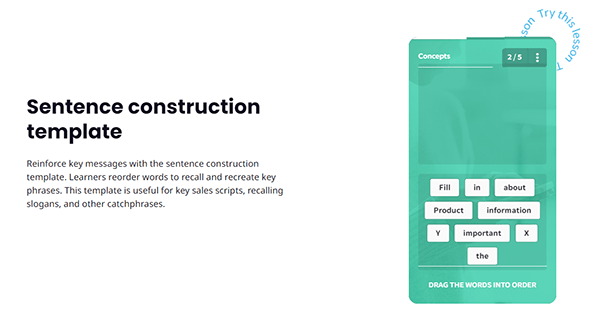
Level 2 (a bit harder): UNDERSTAND
At this level, cognitive skills can include paraphrasing, exemplifying, categorizing, and comparing/contrasting. Consider the chat template. In this option, trainees pick the most appropriate response in a situation – using speech bubbles. So you could give them three chat bubbles and instruct them to ‘Choose the most (or least) empathetic response’.
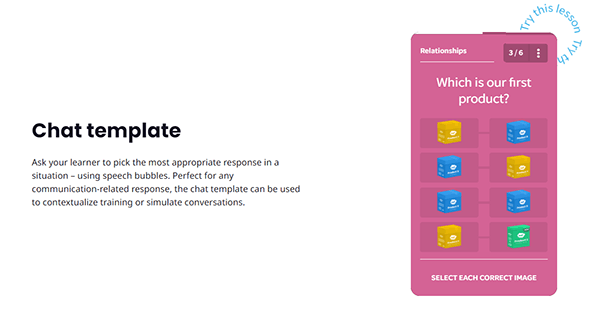
Another option to present communication skills lessons is the carousel template in which learners swipe through answers to pick the best one. They would see, for example, one of the six main characteristics. Then they would see paraphrases or examples. They would then need to choose the option which correctly matches that characteristic.
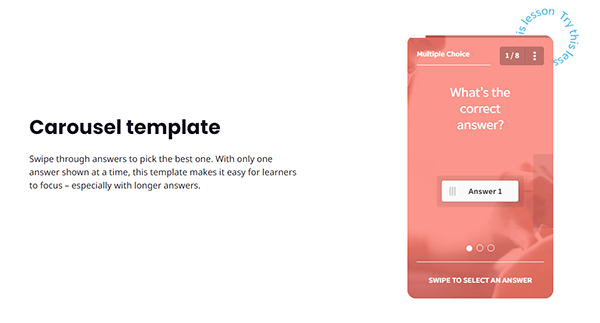
Level 3 (midway, low): APPLY
Level 3 measures how well learners can use the information they’ve absorbed to get something done. It often involves problem-solving. The discussions feature is perfect. On EdApp, Discussions is a ‘forum’ style feature in which admins can pose questions or topics to their learners and start a peer-to-peer and/or peer-to-admin conversation.

If you use the peer-to-admin option, this is how you could go about it. You can begin with a customer service issue that is common to your organization. For example: “The [product] a person bought is the wrong size / damaged / etc. Your employees must then respond to the problem.
Each time, you can raise the difficulty with more ‘problematic’ concerns, which encourages the trainee to put into practice more and more of the information they’ve been taught.
Level 4 (midway, high) ANALYSE
As its name suggests, this level requires learners to make some type of cognitive manipulation of the information. Actions include differentiating, selecting, integrating, and structuring. Consider using the select-in-order template in which learners tap on each image in the correct order to pass this slide.
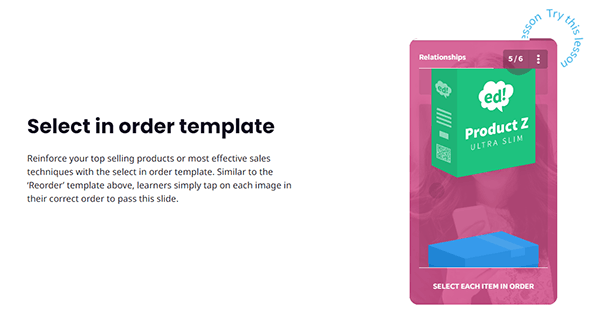
Let’s say you have taught your employees that there is a hierarchy of non-verbal cues when communicating face-to-face. That is, some non-verbal cues are more useful than others when trying to ‘read’ the body language of a customer. The task would then offer a set of images that show the different types of non-verbal cues. Your team members would need to order the images from most to least useful or vice versa.
Level 5 (very challenging) EVALUATE
At this level, the cognitive ability definition would be something like “How well can you judge?” Learners are asked to examine something and make a decision as to how well or badly it fits the criteria they’ve learned.
Let’s think about communication. Chances are, if you watch two people interacting, you'll have a pretty good idea of how positive or negative things will end up. So, create a few simulated roleplays of partial communicative encounters through videos.
After your trainees watch the video, they would use the dial template to predict the success/failure of the communication situation. Use rough estimates such as 25%, 50%, 75%, and 100%. Through this, you will get a great idea of how much learning your trainees have internalized.
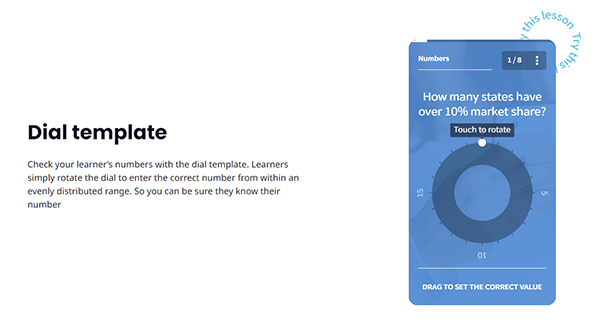
Level 6 (most cognitively complex) CREATE
At the highest level, people need to be able to use the material and skills learned to produce something new. In your case, some relevant cognitive skills examples are:
- writing an email to a problematic employee (fictitious of course) explaining why their recent customer service situation was incorrectly handled and how they can do better next time
- creating an infographic to raise awareness of these six characteristics of skilled communicators
- choosing their favorite three EdApp templates and writing new content for each about these same six characteristics
After people learn what are cognitive skills and take a good look at the way in which cognitive skills tasks stack up on Bloom’s taxonomy, they are often surprised at how ‘low level’ most of the tasks in their current training are. In a way, it makes sense as lower-level activities are much easier to create and evaluate.
Yet, this is one of the biggest reasons for training that is not as effective as it could be. It is not the failure of the training content but rather the cognitive tasks that the learners are asked to do. The tasks just do not push the trainees far enough along the learning path.
Join EdApp for free and start boosting your team’s cognitive skills!
Author
Guest Author Lisa Aharon
Lisa Aharon is a guest author at EdApp, offering varied experience as a computer programmer/analyst, technical writer, secretary/bookkeeper, copy editor, creative writer, and English teacher.
